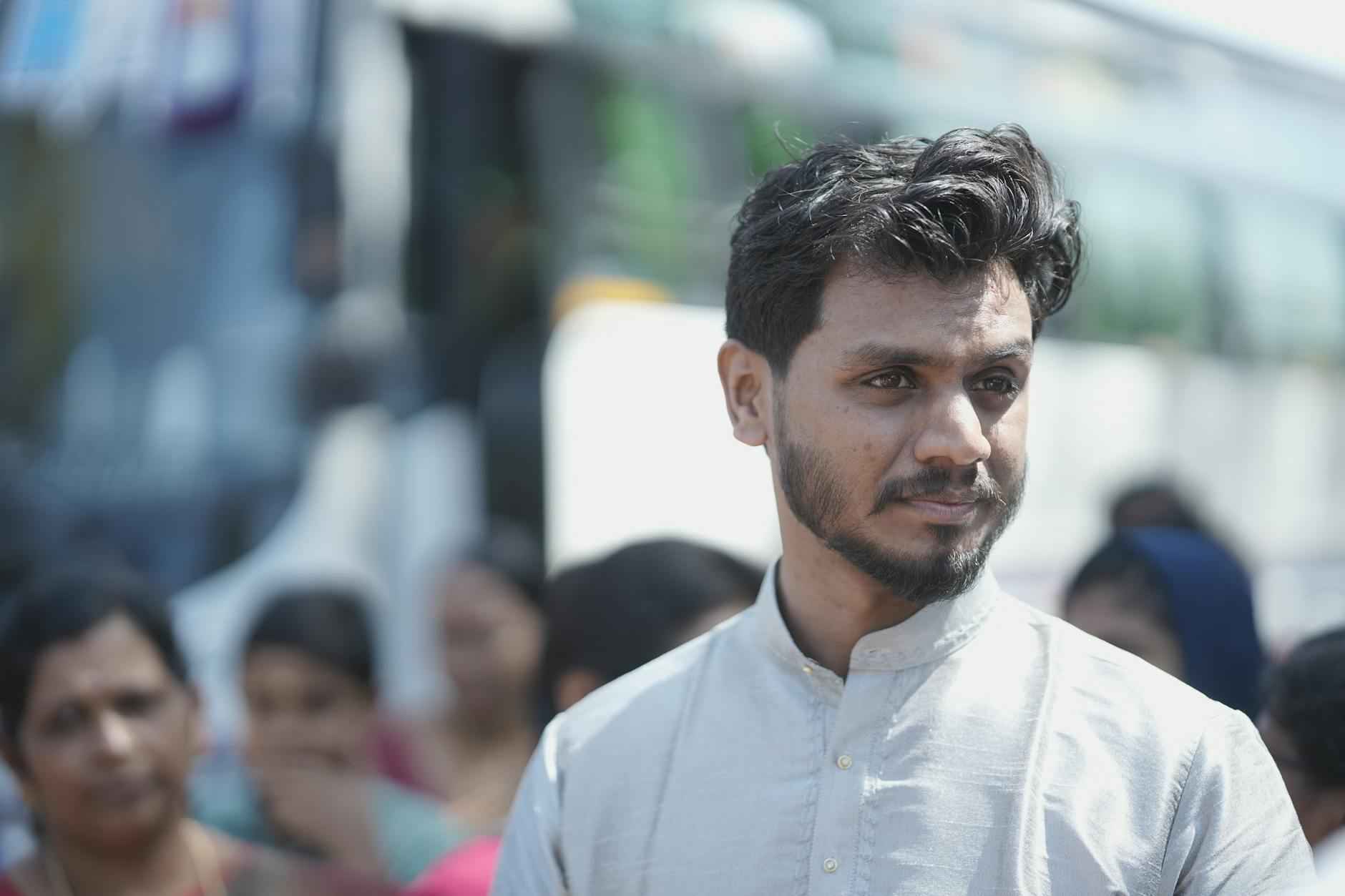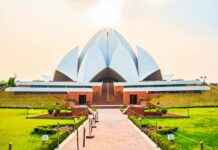This article delves into the profound influence of Indian-American communities on the cultural landscape of New York. Their contributions span various sectors, including cuisine, arts, and community development, creating a rich tapestry of cultural diversity that enhances the city’s identity.
Historical Overview of Indian Immigration to New York
Understanding the historical context of Indian immigration to New York is essential to appreciate the cultural contributions made by Indian-Americans over the decades. The first significant wave of Indian immigrants arrived in the early 20th century, primarily consisting of laborers and students. Over the years, immigration policies evolved, leading to a more diverse population that included professionals and families. Today, Indian-Americans form one of the largest immigrant groups in New York, contributing to the city’s multicultural environment.
Indian Cuisine: A Culinary Revolution in New York
Indian cuisine has revolutionized the food scene in New York, introducing a plethora of flavors and culinary practices that have become integral to the city’s gastronomic identity. The rise of Indian restaurants has made dishes like butter chicken, biryani, and paneer tikka household names. Furthermore, Indian spices such as cumin, coriander, and turmeric have not only enriched the flavor profiles of various dishes but have also influenced chefs across different cuisines, leading to a fusion of flavors that attracts food enthusiasts from all walks of life.
Fusion Cuisine Trends
The blending of Indian flavors with other culinary traditions has led to innovative fusion dishes, such as Indian tacos and curried burgers, which are now popular in many eateries across the city. This culinary creativity showcases the adaptability of Indian cuisine and its ability to resonate with diverse palates, making Indian food a staple in New York’s vibrant food culture.
Restaurants and Food Festivals
The rise of Indian restaurants and food festivals in New York highlights the vibrant food culture and the community’s efforts to share their culinary heritage with a broader audience. Events like the Queens Night Market and the India Day Parade celebrate Indian cuisine, drawing large crowds and fostering a sense of community among attendees.
Indian Arts and Entertainment: A Cultural Mosaic
The Indian-American community has significantly influenced New York’s arts and entertainment scene, contributing to the diversity and richness of the city’s cultural offerings. Bollywood films and music have garnered a dedicated following, with numerous film festivals and music events celebrating Indian cinema. This has not only provided a platform for Indian artists but has also introduced New Yorkers to the vibrancy of Indian culture.
Art Exhibitions and Performances
Various art exhibitions and performances by Indian artists have enriched New York’s cultural landscape, showcasing traditional and contemporary Indian art forms. Galleries and cultural institutions frequently host exhibitions that highlight the works of Indian artists, fostering appreciation and understanding of their unique perspectives.
Community Organizations and Their Impact
Community organizations play a crucial role in supporting Indian-Americans in New York, providing resources and fostering cultural heritage through various initiatives. These organizations work tirelessly to promote cultural awareness and understanding among diverse communities, helping to bridge gaps and foster inclusivity. They also provide vital support networks for new immigrants, offering guidance and assistance in navigating life in a new country.
Education and Youth Engagement
The Indian-American community places a strong emphasis on education, leading to initiatives that engage youth and promote academic success. Scholarship programs specifically aimed at Indian-American students help to alleviate financial burdens and encourage higher education within the community. Additionally, cultural education through extracurricular activities allows youth to connect with their heritage while developing skills in music, dance, and other traditional arts.
Political Engagement and Representation
Political engagement among Indian-Americans has increased significantly, leading to greater representation and influence in local and national politics. Prominent Indian-American political figures have emerged in New York, advocating for policies that benefit their communities and contribute to the city’s governance. Grassroots movements spearheaded by Indian-Americans have addressed various social issues, demonstrating the community’s commitment to civic engagement and activism.
The Future of Indian-American Culture in New York
As the Indian-American community continues to grow, its influence on New York’s culture is expected to expand, enriching the city’s diversity and cultural fabric for generations to come. This ongoing evolution reflects the resilience and adaptability of Indian-Americans, who continue to make significant contributions to the city they call home.
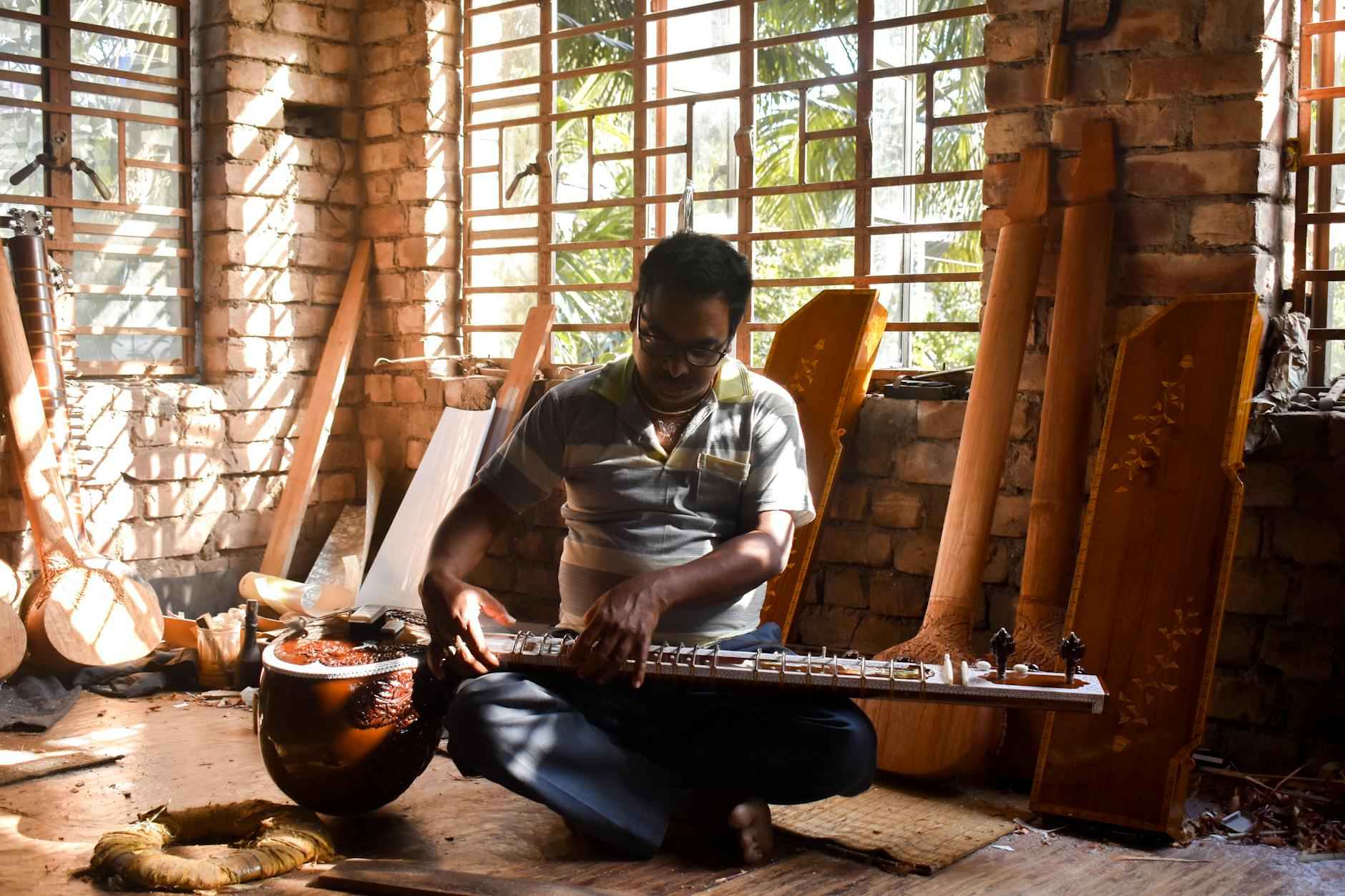
Historical Overview of Indian Immigration to New York
The Role of Indian-American Communities in Shaping New York’s Culture
This article explores the significant impact of Indian-American communities on the cultural landscape of New York, highlighting their contributions in various sectors such as cuisine, arts, and community development.
Understanding the historical context of Indian immigration to New York is crucial for appreciating the cultural contributions made by Indian-Americans over the decades. The journey of Indian immigrants to New York began in the late 19th century, when the first significant wave of Indian laborers arrived, primarily from the Punjab region. These early immigrants were often drawn to the United States by the promise of economic opportunities and the allure of a better life.
During the early 1900s, the Indian population in New York was relatively small, consisting mainly of men who worked in low-paying jobs. However, the Immigration Act of 1924 severely restricted immigration from Asia, which led to a stagnation in the growth of the Indian community for several decades. Despite these challenges, the community began to establish roots, forming small cultural and religious organizations that would lay the groundwork for future generations.
It wasn’t until the 1960s, with the Immigration and Nationality Act, that Indian immigration to New York saw a significant increase. This legislation opened the doors to skilled professionals, leading to a wave of Indian doctors, engineers, and entrepreneurs who would contribute immensely to the city’s economy and cultural fabric. As these new immigrants settled in New York, they brought with them a rich tapestry of traditions, languages, and culinary practices.
By the 1980s, the Indian-American community began to flourish, with neighborhoods such as Jackson Heights in Queens emerging as vibrant cultural hubs. This area became known for its Indian grocery stores, restaurants, and cultural events, serving as a focal point for the community. The establishment of organizations like the Indian American Center for Political Awareness and the Indo-American Arts Council further solidified the presence of Indian culture in New York.
In recent years, the Indian-American community has continued to grow and diversify, encompassing a wide range of backgrounds and experiences. Today, Indian-Americans are not only significant contributors to the economy but also play a vital role in the cultural landscape of New York. Festivals like Diwali and Holi are celebrated with great enthusiasm, drawing participation from people of various backgrounds and fostering intercultural understanding.
The historical journey of Indian immigration to New York is a testament to the resilience and adaptability of the community. From early laborers to contemporary professionals, Indian-Americans have made enduring contributions that enrich the city’s cultural identity. Understanding this history allows us to better appreciate the diverse cultural contributions made by Indian-Americans, ensuring that their stories continue to be told and celebrated.

Indian Cuisine: A Culinary Revolution in New York
Indian cuisine has become a transformative force in New York’s food scene, bringing a wealth of flavors, aromas, and culinary traditions that have captivated the city’s diverse population. The vibrant Indian-American community has played a pivotal role in this culinary revolution, introducing a variety of dishes and cooking techniques that have not only enriched the local gastronomy but have also influenced other culinary practices throughout the city.
As New Yorkers increasingly seek out unique dining experiences, Indian cuisine has emerged as a favorite, characterized by its bold spices and intricate flavors. The rise of Indian restaurants, food trucks, and pop-up eateries across the city has made it easier for residents and visitors alike to explore this rich culinary heritage.
One of the defining features of Indian cuisine is its use of spices. Ingredients such as cumin, coriander, turmeric, and cardamom not only enhance the flavor of dishes but also offer numerous health benefits. The art of balancing these spices is a hallmark of Indian cooking, allowing chefs to create dishes that are both complex and satisfying. This emphasis on flavor has caught the attention of food enthusiasts across New York, leading to a growing appreciation for Indian gastronomy.
- Butter Chicken: A creamy, tomato-based curry that has become a staple in many Indian restaurants.
- Biryani: A fragrant rice dish often layered with marinated meats and aromatic spices.
- Samosas: Deep-fried pastries filled with spiced potatoes, peas, or meat, perfect as appetizers.
- Chaat: A popular street food that combines crispy snacks with tangy sauces and yogurt.
The popularity of these dishes reflects not only the culinary skills of Indian chefs but also the cultural exchange that occurs when diverse communities come together. Food festivals and events celebrating Indian cuisine have further solidified its place in New York’s gastronomic scene, attracting food lovers from all backgrounds.
The blending of Indian flavors with other culinary traditions has led to exciting fusion dishes that showcase creativity and innovation. Restaurants are experimenting by incorporating Indian spices into Italian pasta, Mexican tacos, and even American burgers. This culinary experimentation has resulted in unique offerings such as:
- Tandoori Pizza: A fusion of traditional Indian tandoori chicken and classic pizza.
- Masala Tacos: Tacos filled with spiced potatoes or paneer, served with Indian chutneys.
- Butter Chicken Mac and Cheese: A creamy pasta dish infused with the flavors of butter chicken.
Such innovations not only cater to diverse palates but also reflect the ever-evolving nature of New York’s food culture, where culinary boundaries are continually pushed.
The explosion of Indian restaurants in New York is a testament to the community’s commitment to sharing their culinary heritage. From upscale dining establishments to casual eateries, the options are vast and varied. Many of these restaurants participate in local food festivals, showcasing their dishes to a broader audience and fostering a sense of community. Events such as the New York Indian Food Festival and various cultural celebrations provide platforms for Indian chefs to present their culinary skills, further enriching the city’s food landscape.
In conclusion, Indian cuisine has not only transformed New York’s food scene but has also become a vital part of the city’s cultural identity. The ongoing evolution of Indian culinary practices, coupled with the community’s dedication to sharing their rich heritage, ensures that the flavors of India will continue to thrive in New York for years to come.
Popular Indian Dishes in New York
New York City, known for its diverse culinary landscape, has become a melting pot of flavors and cultures, with Indian cuisine emerging as a significant player. The rich culinary heritage of the Indian-American community has not only introduced traditional dishes but has also redefined the gastronomic scene in the city. From street food to fine dining, Indian dishes have captured the hearts and palates of New Yorkers, showcasing the depth and variety of Indian flavors.
- Butter Chicken: This creamy and spiced dish, known as Murgh Makhani, has become a staple in many Indian restaurants across the city. Its rich tomato sauce and tender chicken pieces make it a favorite among both Indian and non-Indian diners.
- Biryani: The aromatic rice dish, often made with marinated meat and spices, has gained immense popularity. New York’s biryani variations, including Hyderabadi and Kolkata styles, reflect the diverse regional influences within Indian cuisine.
- Samosas: These crispy pastries filled with spiced potatoes and peas are a popular street food item. They are often served with tangy tamarind chutney, making them a perfect appetizer for any meal.
- Paneer Tikka: A vegetarian favorite, this dish features marinated cubes of paneer (Indian cottage cheese) grilled to perfection. It is often accompanied by mint chutney and is a must-try for those exploring Indian cuisine.
- Dosa: This thin, crispy crepe made from fermented rice and lentil batter is often served with a variety of chutneys and sambar (a lentil-based vegetable stew). Dosa has become increasingly popular in brunch menus across the city.
Indian cuisine in New York is not just limited to traditional dishes; it has also embraced innovation and fusion. Many chefs are experimenting with Indian flavors, creating unique dishes that blend different culinary traditions. For instance, Indian-inspired tacos and sushi rolls have become trendy, offering a fresh take on classic dishes.
Food Festivals and Events
The rise of Indian food festivals in New York has further highlighted the community’s culinary contributions. Events like the New York Indian Food Festival celebrate the diversity of Indian cuisine, featuring food stalls, cooking demonstrations, and cultural performances. These festivals provide an opportunity for food enthusiasts to explore various regional dishes and learn about the rich history behind them.
Influence of Indian Spices
The use of traditional Indian spices has played a crucial role in elevating the flavor profiles of dishes served in New York. Spices like cumin, coriander, turmeric, and garam masala are not only essential in Indian cooking but have also begun to influence chefs in other culinary realms. The incorporation of these spices into various dishes has created a unique fusion that appeals to a broader audience.
As Indian cuisine continues to thrive in New York, it is clear that the Indian-American community has made a lasting impact on the city’s food culture. With a commitment to preserving their culinary traditions while embracing innovation, they have ensured that Indian cuisine remains a vibrant and integral part of New York’s diverse gastronomic landscape.
Influence of Indian Spices
The culinary landscape of New York City is a melting pot of flavors and traditions, with Indian cuisine playing a pivotal role in its evolution. One of the most significant aspects of Indian cooking is the use of traditional spices, which not only enhance the taste of dishes but also bring a depth of flavor that is revered by chefs and food enthusiasts alike. This article delves into the on the culinary scene in New York, exploring how these aromatic ingredients have transformed not just Indian restaurants but also the broader gastronomic culture of the city.
Indian cuisine is renowned for its rich and diverse spice palette, which includes staples like cumin, coriander, turmeric, cardamom, and fenugreek. These spices are not merely flavor enhancers; they are integral to the identity of Indian dishes. For instance, turmeric is celebrated not just for its vibrant color but also for its health benefits, while cumin adds a warm, earthy flavor that is essential in many preparations.
The introduction of Indian spices to New York’s food culture has led to a culinary revolution. Chefs in the city have embraced these spices, experimenting with them in various cuisines. For example, Indian spices are now commonly found in fusion dishes that blend traditional Indian flavors with Italian, Mexican, and even American classics. This trend has not only expanded the flavor profiles of these cuisines but has also introduced a new audience to the wonders of Indian cooking.
Renowned chefs in New York have recognized the potential of Indian spices to elevate their dishes. Many have taken to incorporating spices like garam masala into their marinades or using saffron to enhance risottos. This innovative approach has attracted a diverse clientele eager to experience the unique combinations of flavors. The use of Indian spices has also prompted chefs to create dishes that are more inclusive, catering to a wider range of dietary preferences, including vegan and gluten-free options.
Beyond their flavor-enhancing properties, Indian spices are celebrated for their health benefits. For instance, turmeric is known for its anti-inflammatory properties, while ginger aids digestion. As health-conscious dining becomes increasingly popular, many restaurants in New York highlight these benefits on their menus, appealing to diners looking for both flavor and nutrition. This trend has led to a greater understanding and appreciation of how spices can contribute to overall well-being.
The influence of Indian spices extends beyond the kitchen. Community events, cooking classes, and food festivals often showcase the use of these spices, fostering a deeper connection between Indian culture and the broader New York community. These events serve as platforms for educating attendees about the significance of spices in Indian cuisine, promoting cultural exchange and understanding.
As the culinary landscape of New York continues to evolve, the influence of Indian spices is expected to grow. With an increasing number of chefs experimenting with these flavors, the city’s food scene will likely see even more innovative dishes that celebrate the rich heritage of Indian cuisine. The ongoing interest in health-conscious eating will also ensure that the benefits of these spices remain a focal point in future culinary creations.
Fusion Cuisine Trends
The culinary landscape of New York City is a vibrant tapestry woven from diverse cultural influences. Among these, the fusion of Indian flavors with other culinary traditions has emerged as a significant trend, captivating the taste buds of food enthusiasts and creating unique dining experiences. This article delves into the fascinating world of Indian fusion cuisine in New York, exploring its origins, popular dishes, and the impact it has on the city’s gastronomic identity.
Fusion cuisine is a culinary style that combines elements from different culinary traditions to create innovative and exciting dishes. The evolution of fusion cuisine can be traced back to the increasing globalization of food culture, where chefs and home cooks alike began experimenting with flavors, techniques, and ingredients from various cultures. In New York, this trend has been particularly influenced by the city’s multicultural population, which includes a significant Indian-American community.
As Indian immigrants settled in New York, they brought with them rich culinary traditions characterized by bold spices and diverse cooking methods. Over the years, these traditional Indian flavors have been seamlessly blended with other cuisines, resulting in unique dishes that reflect the city’s dynamic food scene. The blending of Indian spices with Italian, Mexican, and even American comfort foods has led to innovative culinary creations that are both familiar and exotic.
New York’s culinary scene boasts a plethora of Indian fusion dishes that have gained immense popularity. One standout example is the butter chicken pizza, which combines the classic Indian butter chicken with a traditional Italian pizza base. This dish showcases the creamy, spiced chicken in a way that appeals to both Indian and non-Indian palates.
Another example is the tandoori chicken taco, which marries the flavors of Indian marinated chicken with the Mexican taco format. Served with a tangy yogurt sauce and fresh cilantro, this dish exemplifies how fusion cuisine can create new dining experiences that celebrate cultural diversity.
Additionally, masala chai lattes have become a popular beverage choice in many cafes, blending traditional Indian spiced tea with the creamy texture of a latte. These dishes and drinks not only highlight the versatility of Indian flavors but also showcase the creativity of chefs who are willing to push culinary boundaries.
Indian chefs in New York have played a pivotal role in the evolution of fusion cuisine. By incorporating their cultural heritage into their culinary practices, these chefs have created a niche that resonates with a diverse clientele. Many chefs draw inspiration from their upbringing and traditional family recipes, infusing them with modern techniques and global flavors.
For instance, renowned Indian chef Vikas Khanna has been instrumental in popularizing Indian fusion cuisine through his innovative dishes that reflect his heritage while appealing to contemporary tastes. His approach emphasizes the importance of storytelling through food, allowing diners to connect with the cultural significance behind each dish.
Moreover, the rise of food festivals and pop-up events in New York has provided Indian chefs with platforms to showcase their fusion creations. These events encourage culinary experimentation and foster collaboration among chefs from different backgrounds, further enriching the city’s food culture.
The impact of Indian fusion cuisine on New York’s food scene is profound. It has not only introduced new flavors and dishes but has also contributed to a broader acceptance and appreciation of diverse culinary traditions. Diners are increasingly open to trying innovative combinations that challenge their palates and expand their culinary horizons.
Additionally, the popularity of fusion cuisine has encouraged restaurants to diversify their menus, offering a wider range of options that cater to evolving consumer preferences. This trend has led to a more inclusive dining experience, where people from different cultural backgrounds can come together to enjoy a meal that reflects their shared love for food.
Furthermore, the success of Indian fusion cuisine has inspired other culinary communities to explore similar blending of flavors, creating a ripple effect throughout the city’s food landscape. As a result, New York continues to be a melting pot of flavors, where culinary innovation thrives and cultural exchange flourishes.
Restaurants and Food Festivals
The rise of Indian restaurants and food festivals in New York is a testament to the city’s vibrant food culture and the Indian-American community’s efforts to share their rich culinary heritage. This phenomenon not only reflects the growing popularity of Indian cuisine but also signifies a deeper cultural exchange that enriches New York’s diverse gastronomic identity.
In recent years, Indian restaurants have seen a remarkable surge in popularity across New York City. This growth can be attributed to several factors:
- Diverse Culinary Offerings: Indian cuisine encompasses a wide range of flavors, ingredients, and cooking techniques, from the rich, creamy dishes of North India to the spicy, tangy flavors of South India. This diversity appeals to a broad audience, including food enthusiasts eager to explore new tastes.
- Health Consciousness: Many Indian dishes are vegetarian or vegan, using a variety of spices and fresh vegetables. This aligns well with the increasing health consciousness among New Yorkers, making Indian food an attractive option for those seeking nutritious meals.
- Innovative Dining Experiences: Many Indian restaurants in New York are not just places to eat; they offer unique dining experiences, incorporating elements of Indian culture such as music, art, and design. This immersive approach attracts diners looking for more than just a meal.
Food festivals play a crucial role in promoting Indian cuisine and culture in New York. These events provide a platform for local chefs and restaurants to showcase their culinary skills and introduce traditional dishes to a wider audience. Some key aspects include:
- Community Engagement: Food festivals foster community spirit by bringing together people from diverse backgrounds to celebrate Indian culture. They often feature cooking demonstrations, cultural performances, and interactive workshops, creating an inclusive environment.
- Showcasing Authenticity: Festivals often highlight authentic Indian flavors and cooking methods, allowing attendees to experience the richness of Indian culinary traditions firsthand. This authenticity helps combat stereotypes and promotes a deeper understanding of the cuisine.
- Networking Opportunities: These events provide networking opportunities for chefs, restaurateurs, and food enthusiasts. They encourage collaboration and innovation within the culinary community, often resulting in new restaurant concepts and fusion dishes.
New York is home to a plethora of Indian restaurants, each offering something unique. Here are a few standout establishments:
- Junoon: Known for its upscale dining experience, Junoon combines traditional Indian flavors with modern culinary techniques, earning a Michelin star for its exquisite dishes.
- Dishoom: A beloved spot for its casual atmosphere and authentic street food, Dishoom offers a taste of Bombay with its vibrant menu and lively ambiance.
- Indian Accent: This restaurant is celebrated for its innovative approach to Indian cuisine, blending traditional recipes with global influences, creating a unique dining experience.
The future of Indian cuisine in New York looks promising as the community continues to evolve and adapt. With an increasing number of young chefs exploring their heritage and experimenting with flavors, we can expect:
- More Fusion Dishes: The trend of fusion cuisine is likely to grow, with chefs creatively blending Indian flavors with other culinary traditions, offering diners exciting and innovative dishes.
- Increased Accessibility: As demand for Indian cuisine rises, more restaurants will likely open, making Indian food accessible to a broader audience across the city.
- Focus on Sustainability: Many new establishments are prioritizing sustainability, sourcing local ingredients, and minimizing waste, aligning with the growing trend of environmentally conscious dining.
In conclusion, the rise of Indian restaurants and food festivals in New York is a celebration of cultural diversity and culinary heritage. As the Indian-American community continues to thrive, it enriches the city’s food scene, inviting everyone to experience the vibrant flavors and traditions of Indian cuisine.
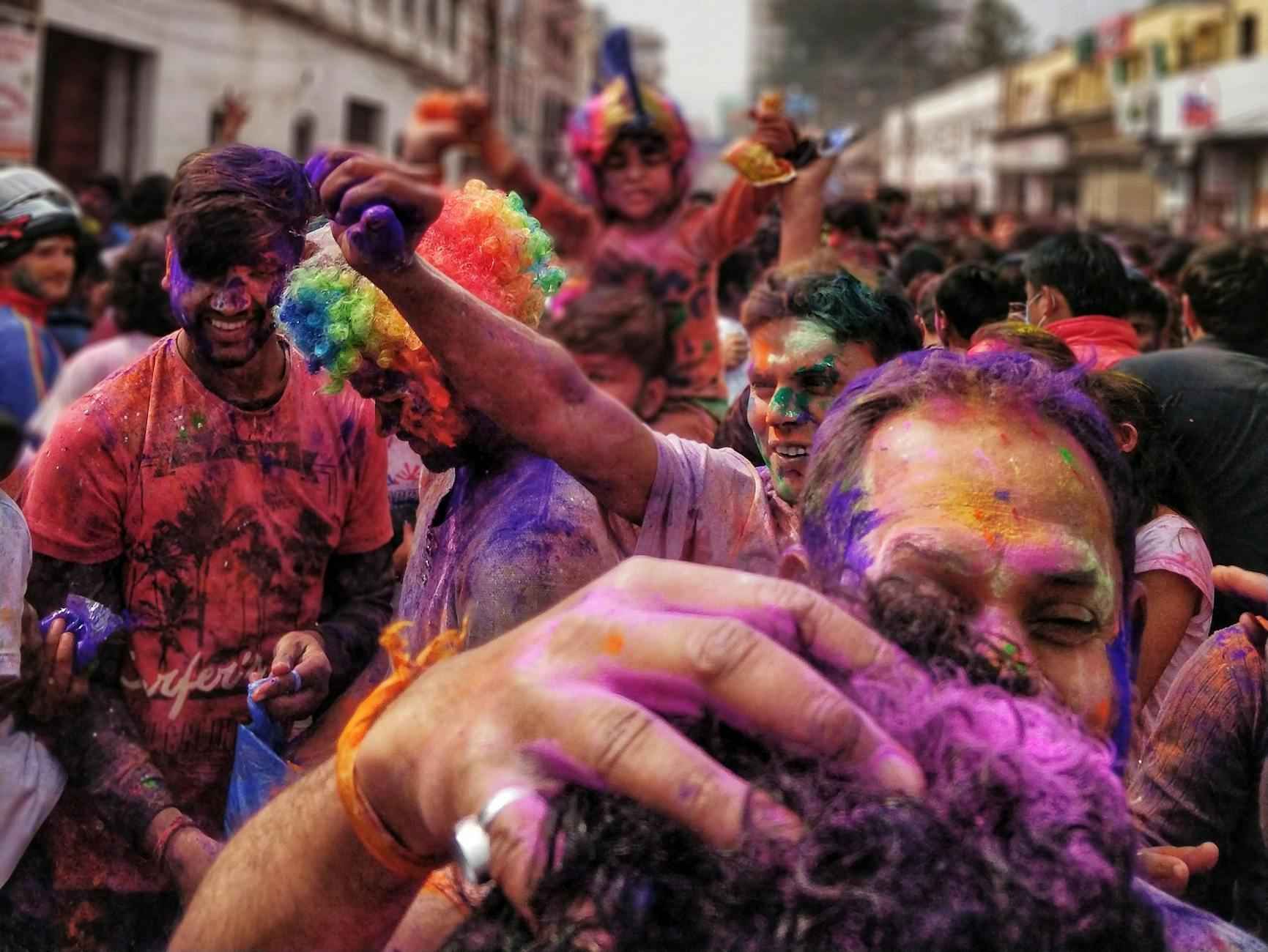
Indian Arts and Entertainment: A Cultural Mosaic
The Indian-American community has profoundly shaped the arts and entertainment landscape of New York City, infusing it with a rich tapestry of cultural expressions. This influence can be seen across various forms of art, including music, dance, theater, and visual arts. The community’s contributions have not only enriched the city’s cultural offerings but have also fostered greater understanding and appreciation of Indian heritage among diverse audiences.
Bollywood Influence in New York
The popularity of Bollywood films and music has surged in New York, reflecting a growing interest in Indian cinema. This phenomenon can be attributed to the efforts of Indian-American filmmakers and artists who have sought to promote Bollywood culture in the United States.
- Film Screenings and Festivals: Events such as the New York Indian Film Festival showcase a wide array of films from India, allowing audiences to experience the vibrancy of Bollywood and regional cinema. These festivals not only promote Indian films but also provide a platform for discussions and interactions between filmmakers and audiences.
- Bollywood Dance Classes: Dance studios across the city offer classes in Bollywood dance, attracting not only the Indian diaspora but also individuals from various backgrounds. This engagement helps to bridge cultural gaps and introduces the dynamic rhythms and movements of Bollywood to a wider audience.
Art Exhibitions and Performances
Indian artists have made significant strides in New York’s art scene, presenting both traditional and contemporary works that reflect their cultural heritage.
- Gallery Showcases: Numerous galleries in New York regularly feature Indian artists, providing them with a platform to exhibit their work and engage with the art community. These exhibitions often highlight themes such as identity, migration, and cultural fusion, resonating with both Indian and non-Indian audiences.
- Theatrical Productions: The rise of Indian theater companies in New York has introduced audiences to a range of performances, from classic Indian plays to modern adaptations. These productions often explore complex narratives that reflect the Indian-American experience, contributing to the city’s diverse theatrical landscape.
Music and Cultural Festivals
The Indian-American community’s influence is also evident in the music scene, where traditional and contemporary Indian music genres have found a home in New York.
- Fusion Music: Many Indian musicians are blending traditional Indian sounds with Western genres, creating a unique fusion that appeals to a broad audience. This innovative approach has led to collaborations between Indian artists and musicians from various backgrounds, enriching the city’s musical diversity.
- Cultural Festivals: Events like the annual India Day Parade and Diwali celebrations in New York showcase the vibrancy of Indian culture through music, dance, and art. These festivals not only celebrate Indian heritage but also invite people from all walks of life to participate, fostering a sense of community and shared cultural appreciation.
Conclusion
The contributions of the Indian-American community to New York’s arts and entertainment scene are invaluable. Through their creativity and cultural expressions, they have not only enriched the city’s artistic landscape but have also played a crucial role in promoting cultural dialogue and understanding. As the community continues to thrive, its influence on New York’s cultural fabric is set to expand, ensuring that the city remains a vibrant mosaic of diverse artistic expressions.
Bollywood Influence in New York
The Bollywood influence in New York has become a vibrant aspect of the city’s cultural landscape, reflecting the growing appreciation for Indian cinema and music among diverse audiences. With a significant Indian-American community, New York serves as a melting pot where Bollywood’s colorful narratives and melodious soundtracks have found a dedicated following. This article delves into the various dimensions of Bollywood’s impact on New York, from film screenings to music events, and how these elements have fostered a deeper understanding of Indian culture.
In recent years, Bollywood films have gained immense popularity in New York, with numerous theaters showcasing the latest releases. This trend has not only provided entertainment but has also created a platform for cultural exchange. Many independent cinemas and mainstream theaters, such as the AMC Empire 25 and Regal E-Walk, regularly host Bollywood film screenings, attracting audiences from various backgrounds.
Special film festivals, like the New York Indian Film Festival, have further elevated Bollywood’s presence in the city. These festivals celebrate the richness of Indian cinema, featuring a mix of mainstream hits and independent films that highlight diverse narratives. The participation of filmmakers, actors, and industry professionals in discussions and Q&A sessions enriches the experience, allowing audiences to gain insights into the filmmaking process and the cultural context of the films.
Bollywood music, characterized by its vibrant melodies and catchy rhythms, has also carved a niche in New York’s music scene. The popularity of Bollywood songs at various events, from weddings to dance parties, showcases the genre’s ability to bring people together. Clubs and lounges often host Bollywood nights, where DJs spin popular tracks, encouraging attendees to dance and celebrate Indian culture.
Moreover, live performances by renowned Bollywood artists and musicians have become a significant draw for audiences in New York. Concerts at venues like The Apollo Theater and The Beacon Theatre not only attract fans of Indian music but also introduce new listeners to the genre, fostering a greater appreciation for its cultural roots.
The Indian-American community’s efforts to promote Bollywood in New York go beyond entertainment; they serve as a means of cultural preservation and education. Community organizations often host film screenings, music workshops, and dance classes that celebrate Bollywood’s rich heritage. These initiatives provide opportunities for individuals, especially younger generations, to connect with their roots while engaging with the broader community.
Additionally, Bollywood-themed events, such as Diwali celebrations and cultural fairs, often feature film screenings and musical performances, attracting diverse audiences and fostering inclusivity. These events not only entertain but also educate attendees about Indian traditions and values, bridging cultural gaps and promoting understanding.
As the Indian-American population continues to grow, the influence of Bollywood in New York is poised to expand even further. With increased access to streaming platforms, audiences can now explore a wider array of Bollywood films and music, enhancing their appreciation for Indian culture. Furthermore, collaborations between Bollywood artists and American musicians are likely to create innovative fusion projects that resonate with a broader audience.
In conclusion, the Bollywood influence in New York is a testament to the city’s cultural diversity and the efforts of the Indian-American community to promote their heritage. Through film screenings, music events, and community engagement, Bollywood has established itself as a significant cultural force, enriching New York’s vibrant arts scene and fostering a deeper understanding of Indian culture among its residents.
Art Exhibitions and Performances
The cultural tapestry of New York City is enriched by the vibrant contributions of Indian artists, who have made significant strides in both traditional and contemporary art forms. This article delves into the that highlight the creativity and talent of the Indian-American community, showcasing how they have shaped the cultural landscape of this iconic city.
Art exhibitions featuring Indian artists have become a prominent aspect of New York’s cultural scene. These exhibitions often serve as a platform for artists to explore their roots while also engaging with contemporary themes. Venues such as the Asia Society Museum and the Queens Museum regularly host exhibitions that focus on Indian art, providing a space for both established and emerging artists to showcase their work.
Through a variety of mediums, including painting, sculpture, and mixed media, Indian artists convey stories that resonate with the diverse audience of New York. For instance, exhibitions often highlight the intricate details of traditional Indian art forms, such as Madhubani and Warli paintings, which are celebrated for their vibrant colors and storytelling elements. These exhibitions not only educate the public about the richness of Indian culture but also foster a greater appreciation for the complexities of modern Indian identity.
Performances by Indian artists in New York encompass a wide range of artistic expressions, including dance, music, and theater. Traditional dance forms such as Bharatanatyam and Kathak are often performed in cultural festivals and dedicated events, captivating audiences with their grace and storytelling. These performances are frequently accompanied by live music, featuring traditional instruments like the sitar and tabla, which enhance the overall experience.
Moreover, Indian-American artists have also embraced contemporary performance art, creating innovative works that reflect the fusion of their cultural heritage with modern influences. For example, dance companies like Chhandam have successfully blended classical dance with contemporary choreography, offering audiences a fresh perspective on traditional art forms. This fusion not only attracts a wider audience but also encourages dialogue about cultural identity and artistic expression.
The impact of Indian art in New York extends beyond exhibitions and performances; it also plays a crucial role in community engagement. Many Indian artists collaborate with local organizations to conduct workshops and outreach programs aimed at educating younger generations about their cultural heritage. These initiatives often include hands-on activities, allowing participants to explore various art forms, from painting to dance, fostering a sense of community and belonging.
Additionally, art festivals such as the South Asian Arts Festival serve as a celebration of Indian culture, bringing together artists, performers, and audiences from diverse backgrounds. These events not only showcase the talents of Indian artists but also promote cultural exchange and understanding among different communities, reinforcing the idea that art transcends boundaries.
As Indian artists continue to thrive in New York’s dynamic cultural landscape, their contributions to art exhibitions and performances will undoubtedly grow. The ongoing dialogue between traditional and contemporary art forms ensures that the rich heritage of India will remain a vital part of New York’s artistic identity. Through their creativity and passion, Indian artists are not only enriching the city’s cultural fabric but also inspiring future generations to explore and celebrate their artistic heritage.
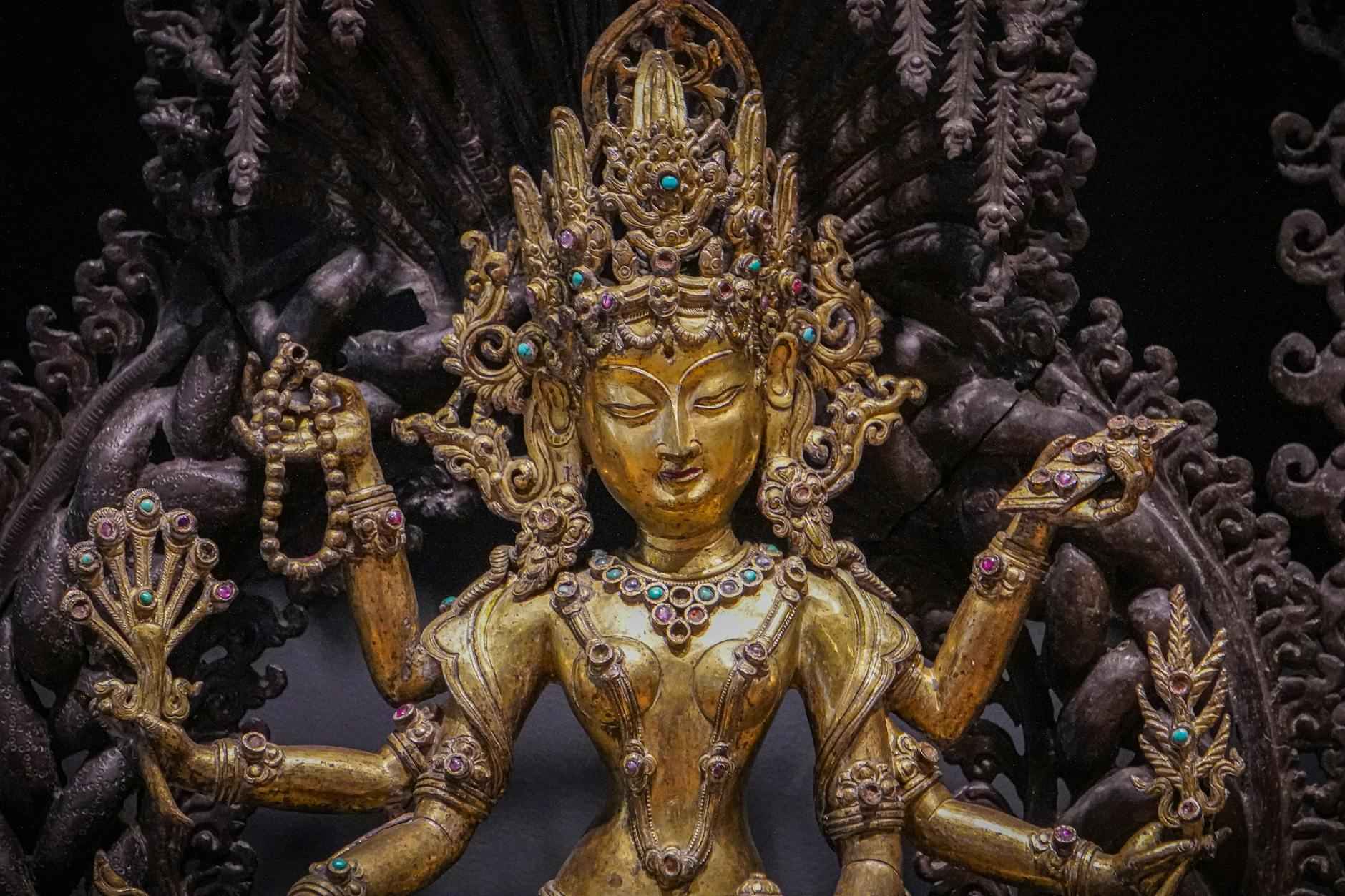
Community Organizations and Their Impact
Community organizations serve as the backbone of support for Indian-Americans in New York, offering a wide array of resources and initiatives that foster cultural heritage and community development. These organizations play an essential role in connecting individuals, promoting cultural understanding, and providing critical services to help navigate the complexities of life in a new country.
What Are the Key Functions of Community Organizations?
- Cultural Preservation: Community organizations work diligently to preserve and promote Indian culture, traditions, and languages. They organize cultural events, festivals, and educational workshops that celebrate Indian heritage and encourage participation from both the Indian-American community and the wider public.
- Resource Provision: These organizations offer various resources, including legal assistance, job training, and educational support, which are particularly beneficial for new immigrants. By providing access to important information and services, they help individuals integrate more effectively into American society.
- Networking Opportunities: Community organizations create platforms for networking, allowing members to connect with one another, share experiences, and build professional relationships. This networking is vital for career development and personal growth.
How Do Community Organizations Foster Cultural Awareness?
Community organizations play a pivotal role in bridging cultural gaps and fostering understanding among diverse populations. They organize cultural exchange programs, workshops, and seminars aimed at educating the broader community about Indian traditions, values, and customs. These initiatives not only promote cultural appreciation but also help combat stereotypes and misconceptions about Indian-Americans.
Moreover, by collaborating with other cultural organizations, Indian-American community groups can amplify their reach and impact. This collaboration often leads to joint events that celebrate multiculturalism, showcasing the richness of Indian culture alongside other traditions.
Support Systems for New Immigrants
For many new immigrants, the transition to life in New York can be overwhelming. Community organizations provide essential support systems that guide individuals through this process. They offer orientation programs that cover various aspects of life in the U.S., including housing, healthcare, and education. Additionally, mentorship programs connect newcomers with established community members who can offer advice and support based on their own experiences.
These organizations also often host social gatherings that help newcomers build connections and friendships, creating a sense of belonging in a foreign environment. This social support is crucial for mental well-being and can significantly ease the transition process.
Engagement in Civic Life
Community organizations actively encourage civic engagement among Indian-Americans. They promote awareness of local and national issues, encouraging community members to participate in the democratic process. Through voter registration drives and educational campaigns, these organizations empower individuals to voice their opinions and advocate for their rights.
Additionally, many organizations engage in advocacy efforts, addressing issues that affect the Indian-American community, such as immigration reform, education policy, and healthcare access. By mobilizing community members, these organizations amplify their collective voice, ensuring that their concerns are heard by policymakers.
Conclusion
In summary, community organizations are vital to the Indian-American experience in New York, providing essential resources, fostering cultural heritage, and promoting civic engagement. Their multifaceted impact not only enriches the lives of Indian-Americans but also contributes to the broader cultural tapestry of New York City.
Promoting Cultural Awareness
In a world that is becoming increasingly interconnected, the importance of cultural awareness cannot be overstated. Community organizations, especially those representing the Indian-American community in New York, play a pivotal role in this regard. These organizations work diligently to foster understanding and appreciation of diverse cultures, bridging gaps that often exist between different communities.
One of the primary objectives of these organizations is to create platforms for dialogue and exchange. They organize events such as cultural festivals, workshops, and seminars that allow individuals from various backgrounds to come together, share their experiences, and learn from one another. For instance, events like the India Day Parade in Manhattan not only celebrate Indian culture but also invite people from all walks of life to participate, thereby promoting inclusivity.
Furthermore, community organizations often collaborate with local schools and educational institutions to introduce programs that focus on cultural education. Through these initiatives, students gain insights into the rich traditions, languages, and customs of the Indian-American community. This educational approach not only enriches the students’ knowledge but also helps dismantle stereotypes and misconceptions about different cultures.
Workshops and Cultural Exchanges
- Workshops on traditional Indian dance and music not only provide artistic education but also foster a sense of community.
- Cultural exchange programs allow participants to experience Indian festivals, cuisine, and customs firsthand, creating lasting memories and friendships.
Moreover, these organizations often engage in outreach programs that focus on underrepresented groups within the community. By providing resources and support, they help individuals navigate cultural differences and promote mutual respect. For example, initiatives aimed at assisting new immigrants in understanding American customs and societal norms are crucial for fostering a sense of belonging.
Collaborative Efforts with Other Communities
Collaboration with other cultural organizations is another effective strategy employed by Indian-American community groups. By partnering with organizations representing various cultures, they can host joint events that celebrate diversity. Such collaborations not only enhance cultural awareness but also create a unified front against discrimination and prejudice.
In addition to cultural festivals, these organizations often participate in community service projects that benefit the broader society. By engaging in activities such as food drives, health fairs, and educational outreach, they demonstrate their commitment to social responsibility and community welfare. This not only builds goodwill but also highlights the positive contributions of the Indian-American community to New York City.
Utilizing Social Media for Cultural Promotion
In today’s digital age, social media serves as a powerful tool for promoting cultural awareness. Many community organizations leverage platforms like Facebook, Instagram, and Twitter to share stories, highlight events, and engage with a wider audience. Through these channels, they can reach individuals who may not have the opportunity to participate in person, thereby expanding their impact.
By sharing videos of cultural performances, recipes, and personal stories, these organizations create an online community that fosters understanding and appreciation for the richness of Indian culture. This digital outreach is particularly effective in attracting younger generations, who are often more engaged with online content.
In conclusion, the role of community organizations in promoting cultural awareness is invaluable. Through their various initiatives, they not only celebrate the rich heritage of the Indian-American community but also work tirelessly to create an inclusive environment where diversity is embraced. As these organizations continue to evolve and adapt to the changing landscape, their efforts will undoubtedly contribute to a more harmonious and understanding society.
Support Networks for New Immigrants
In the bustling metropolis of New York, the Indian-American community plays a pivotal role in shaping the cultural and social landscape, particularly for new immigrants. The transition to a new country can be daunting, filled with challenges that range from language barriers to cultural adjustments. This is where community organizations come into play, providing essential support networks for new immigrants.
When individuals arrive in New York from India, they often find themselves in unfamiliar territory. The complexity of adapting to a new environment, understanding local customs, and navigating bureaucratic systems can be overwhelming. Community organizations serve as a crucial lifeline, offering a range of resources that help immigrants settle into their new lives.
- Guidance and Mentorship: Many organizations pair newcomers with mentors who have successfully navigated the immigration process. These mentors provide invaluable insights into daily life in New York, from finding housing to understanding public transportation.
- Language Support: Language barriers can significantly hinder integration. Support networks often offer language classes or conversation groups, helping immigrants improve their English skills and gain confidence in communication.
- Legal Assistance: Navigating immigration laws can be complex. Many community organizations provide access to legal resources, offering workshops and consultations to help immigrants understand their rights and responsibilities.
- Employment Resources: Finding a job is often a top priority for new immigrants. Support networks assist with resume writing, interview preparation, and job placement services, connecting individuals with potential employers in their fields.
- Cultural Orientation: Understanding cultural norms and practices in New York is essential for successful integration. Community organizations often host workshops and events that introduce newcomers to local customs, helping them feel more at home.
Moreover, these support networks foster a sense of community by organizing social events, cultural celebrations, and networking opportunities. Such gatherings not only allow newcomers to meet others from similar backgrounds but also help them build friendships and support systems that can last a lifetime.
In addition to practical assistance, these organizations play a vital role in emotional support. Moving to a new country can be isolating, and having a network of individuals who understand the immigrant experience can alleviate feelings of loneliness and anxiety. Many organizations provide counseling services and support groups, offering a safe space for individuals to share their experiences and challenges.
Furthermore, the impact of these support networks extends beyond individual immigrants. By helping newcomers integrate into society, they contribute to the overall diversity and richness of New York’s cultural fabric. This not only enhances the city’s social landscape but also promotes economic growth as immigrants bring unique skills and perspectives to the workforce.
In conclusion, the support networks established by Indian-American organizations are indispensable for new immigrants in New York. They provide essential resources, foster community connections, and facilitate cultural integration, ensuring that newcomers can navigate their new lives with confidence and support. As these networks continue to evolve, they will undoubtedly play a critical role in shaping the future of the Indian-American community in New York.
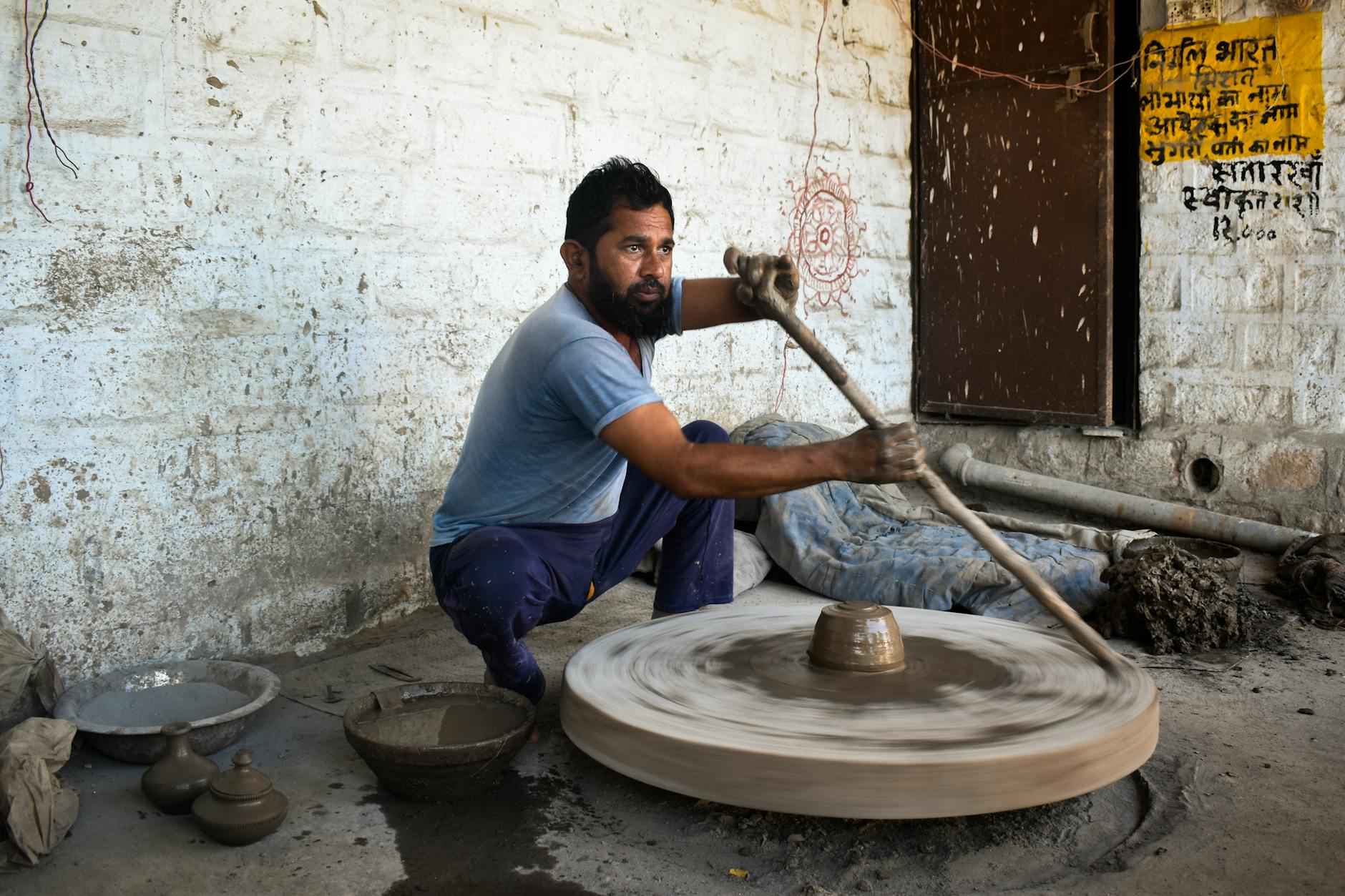
Education and Youth Engagement
The Indian-American community has long recognized the importance of education as a cornerstone for individual and community advancement. This commitment is evident in numerous initiatives aimed at fostering academic success among youth. By creating a supportive environment that emphasizes learning, the community not only prepares its younger generation for future challenges but also contributes to the broader societal fabric.
Education is often viewed as a pathway to success within the Indian-American community. Many families prioritize academic achievement, encouraging children to pursue higher education and excel in their studies. This cultural emphasis is rooted in the belief that education can lead to better job opportunities and improved quality of life.
To support this educational focus, numerous scholarship programs have been established specifically for Indian-American students. These programs aim to alleviate financial burdens associated with higher education, enabling students to pursue their academic goals without the overwhelming stress of student debt. Organizations such as the Indian American Scholarship Fund and local community foundations provide financial assistance, mentorship, and guidance to aspiring students.
Beyond academics, the Indian-American community also emphasizes the importance of extracurricular activities as a means of fostering well-rounded individuals. Various organizations offer programs in music, dance, and traditional arts, allowing youth to connect with their cultural heritage while developing essential life skills. These activities not only enhance creativity but also promote teamwork and leadership qualities.
In today’s technology-driven world, there is a growing focus on STEM (Science, Technology, Engineering, and Mathematics) education within the Indian-American community. Many organizations have launched initiatives aimed at encouraging youth to pursue careers in these fields. Workshops, mentoring programs, and partnerships with local schools help to inspire the next generation of innovators and problem solvers.
Community organizations play an essential role in youth engagement, providing resources and support for students and their families. These organizations often host events, workshops, and seminars that address various educational topics, from college readiness to financial literacy. By fostering a sense of community, they help students navigate the challenges of academic life and connect with peers who share similar experiences.
Parental involvement is another critical factor in the academic success of Indian-American youth. Many parents actively engage in their children’s education by attending school events, participating in parent-teacher associations, and advocating for their children’s needs. This strong support system reinforces the value of education and encourages students to strive for excellence.
While the Indian-American community has made significant strides in education, challenges remain. Issues such as cultural pressures, mental health concerns, and the need for greater representation in educational materials can impact student success. However, the community’s resilience and commitment to addressing these challenges present opportunities for growth and improvement.
In conclusion, the Indian-American community’s emphasis on education and youth engagement is evident through various initiatives that promote academic success. By investing in scholarship programs, extracurricular activities, and community support, they are shaping the future leaders of tomorrow.
Scholarship Programs
The pursuit of higher education is a crucial goal for many students, yet financial barriers can often hinder their aspirations. In the Indian-American community, scholarship programs serve as a beacon of hope, alleviating financial burdens and encouraging academic success.
Scholarship programs specifically designed for Indian-American students play a vital role in promoting educational attainment within this community. These scholarships not only provide financial assistance but also foster a sense of belonging and support among students. By reducing the financial strain associated with higher education, these programs enable students to focus on their studies and extracurricular activities, ultimately enhancing their overall college experience.
- Merit-Based Scholarships: These scholarships are awarded based on academic achievements, talents, or other criteria. They recognize students who demonstrate exceptional abilities in various fields.
- Need-Based Scholarships: Designed for students who demonstrate financial need, these scholarships aim to ensure that financial constraints do not prevent talented individuals from pursuing their education.
- Community-Specific Scholarships: Many organizations offer scholarships tailored specifically for the Indian-American community, reflecting the unique cultural heritage and experiences of these students.
Participating in scholarship programs provides numerous advantages for Indian-American students:
- Financial Relief: Scholarships significantly reduce the burden of tuition fees, allowing students to allocate funds toward other essential expenses such as books, housing, and living costs.
- Encouragement and Motivation: Receiving a scholarship can boost a student’s confidence and motivation, encouraging them to excel academically and engage in community service.
- Networking Opportunities: Many scholarship programs offer networking events and mentorship opportunities, connecting students with professionals and peers in their fields of interest.
Several organizations and institutions offer scholarships specifically for Indian-American students:
- The National Indian American Heritage Month Scholarship: This scholarship honors students who actively promote Indian culture and heritage through community service and academic excellence.
- The Asian Pacific Fund: This organization provides various scholarships for Asian American students, including those of Indian descent, focusing on academic merit and community involvement.
- The Indian American Scholarship Fund: This fund aims to support Indian-American students pursuing higher education by offering financial assistance and mentorship.
Applying for scholarships can be a straightforward process if students follow these steps:
- Research: Begin by identifying scholarships that match your academic profile and interests.
- Prepare Documentation: Gather necessary documents such as transcripts, letters of recommendation, and personal statements.
- Submit Applications: Complete the application process by adhering to deadlines and submission guidelines.
- Follow Up: After submitting applications, consider reaching out to scholarship committees to express gratitude and confirm receipt of your application.
In conclusion, scholarship programs play a crucial role in empowering Indian-American students to pursue their educational goals. By providing financial support and fostering a sense of community, these programs not only help alleviate financial burdens but also encourage a culture of academic excellence and civic engagement among young individuals in the Indian-American community.
Extracurricular Activities and Cultural Education
In today’s diverse society, the importance of cultural education through extracurricular activities cannot be overstated. For youth, these activities serve as a bridge connecting them to their heritage, while simultaneously providing opportunities to develop essential skills. This article delves into how engaging in music, dance, and traditional arts not only fosters a sense of identity but also enriches the overall educational experience.
Extracurricular activities that focus on cultural education allow young individuals to explore and embrace their heritage. By participating in traditional arts, they gain a deeper understanding of their cultural backgrounds. This connection is vital for personal growth and self-acceptance. For instance, learning traditional dance forms such as Bharatanatyam or Kathak can instill pride in one’s roots, enabling youth to appreciate the richness of their cultural narratives.
Engagement in music, dance, and other traditional arts provides numerous skills that are transferable to various aspects of life. Through these activities, youth learn discipline, teamwork, and creativity. For example, participating in a community choir not only enhances vocal skills but also fosters collaboration and communication among peers. Similarly, dance classes promote physical fitness and coordination, while also encouraging expression and emotional release.
Community organizations play a pivotal role in facilitating extracurricular activities that promote cultural education. These organizations often provide resources, such as workshops and classes, that make it easier for youth to engage in traditional arts. By offering a structured environment, they ensure that young individuals have access to experienced instructors who can guide them in their artistic journeys. Moreover, these organizations often host cultural festivals and showcases, providing a platform for youth to display their talents and celebrate their heritage.
Participating in cultural extracurricular activities also enhances social skills and encourages community engagement. As youth collaborate on performances or projects, they learn to navigate diverse social situations and build lasting friendships. This sense of community fosters a supportive environment where individuals can thrive. Additionally, by engaging in cultural events, youth become more aware of social issues affecting their communities, empowering them to take action and contribute positively.
The integration of cultural education through extracurricular activities is essential for the holistic development of youth. By connecting with their heritage and developing valuable skills, young individuals not only enrich their own lives but also contribute to the broader cultural landscape of their communities. As society continues to evolve, the importance of these activities will remain crucial in fostering a sense of identity and belonging among youth.
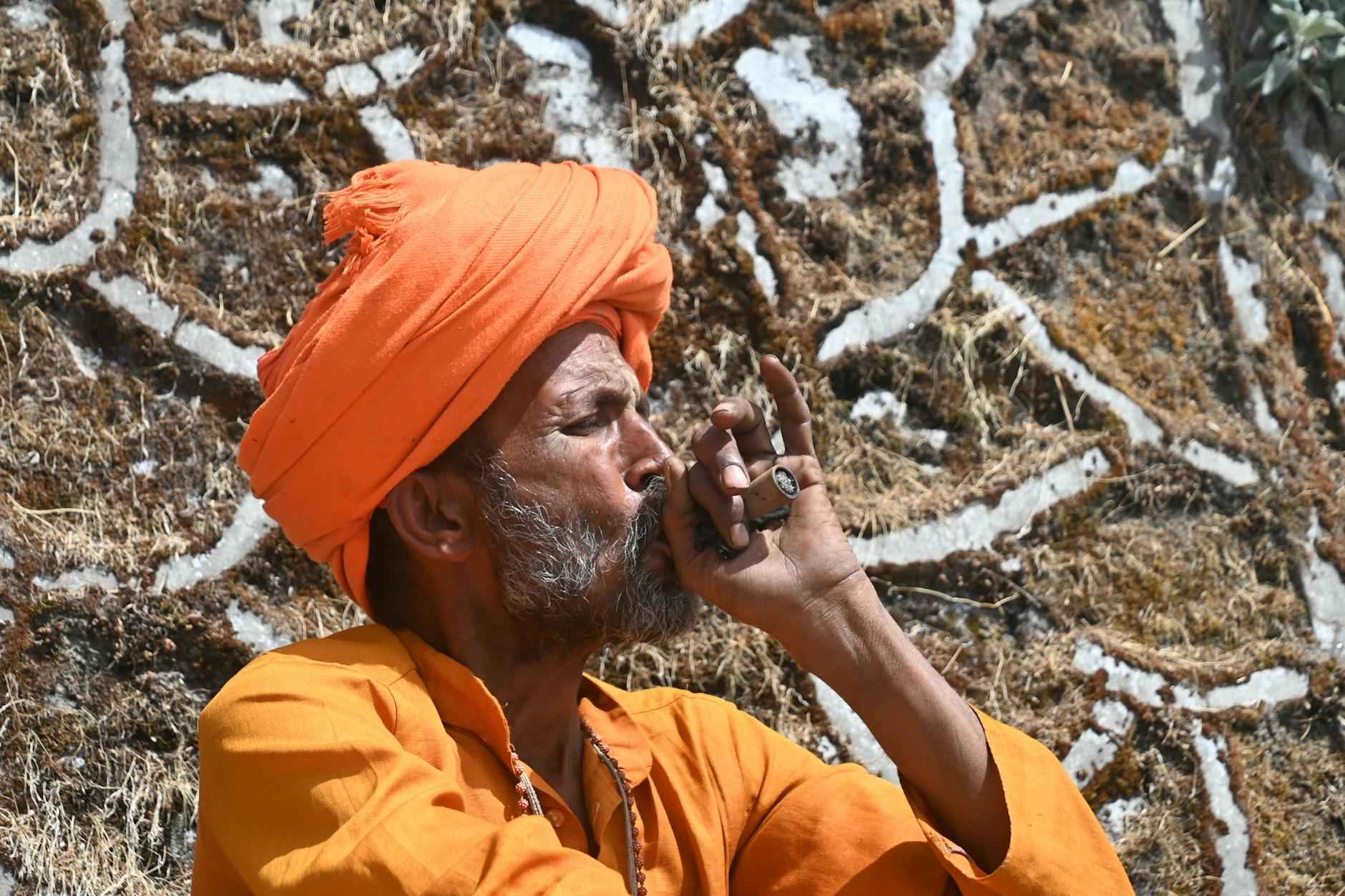
Political Engagement and Representation
Political engagement among Indian-Americans has surged in recent years, resulting in a notable increase in their representation and influence within both local and national political arenas. This trend reflects a broader movement towards civic participation that is reshaping the political landscape in the United States. In this article, we will explore the factors contributing to this escalation in political involvement and the implications it holds for the Indian-American community.
The rise in political engagement among Indian-Americans can be attributed to a variety of factors. First and foremost, increased immigration and the establishment of a strong diaspora have played a crucial role. As more Indian nationals moved to the United States, they brought with them a wealth of cultural and political knowledge, fostering a community that values civic participation.
Additionally, recent political events and social movements have galvanized Indian-Americans to become more active. Issues such as immigration reform, civil rights, and healthcare have resonated deeply within the community, prompting many to take action. Grassroots organizations have emerged, mobilizing community members to advocate for their rights and interests.
Prominent Indian-American figures have emerged as influential leaders in various political spheres. Individuals like Kamala Harris, the first female Vice President of the United States, and Nikki Haley, former U.S. Ambassador to the United Nations, have paved the way for increased visibility and representation. Their success stories serve as inspiration for many within the community, encouraging greater participation in political processes.
Moreover, local leaders have also made significant strides. Many Indian-Americans have been elected to city councils, school boards, and state legislatures, thereby ensuring that their voices are heard in governance. This representation is crucial, as it allows for the inclusion of diverse perspectives in policymaking.
Grassroots movements have become a powerful force for change within the Indian-American community. Organizations such as the Indian American Impact Fund and South Asian Americans Leading Together (SAALT) have been instrumental in mobilizing voters and advocating for policies that address the unique challenges faced by Indian-Americans.
These organizations not only focus on political advocacy but also provide education and resources to empower community members. By hosting workshops, town halls, and voter registration drives, they are actively engaging the community and fostering a culture of civic responsibility.
Despite the progress made, challenges remain. Issues such as voter suppression and misinformation continue to pose significant obstacles for the Indian-American community. It is essential for community leaders to address these challenges head-on, ensuring that all voices are heard and represented.
Looking forward, the opportunities for Indian-Americans in politics are vast. As the community continues to grow and diversify, there is an increasing potential for new leaders to emerge. Engaging younger generations and encouraging them to participate in political processes will be vital for sustaining this momentum.
In conclusion, the increased political engagement among Indian-Americans signifies a transformative shift that is reshaping the landscape of American politics. By leveraging their collective power, the Indian-American community is poised to make lasting impacts on local and national levels.
Key Political Figures
The Indian-American community in New York has made significant strides in political engagement, with several prominent figures emerging as influential leaders. These individuals not only represent the interests of their constituents but also advocate for policies that enhance the quality of life for all New Yorkers. Their contributions are crucial in shaping the governance of the city, and they serve as role models for future generations.
Who Are the Prominent Indian-American Political Figures in New York?
- Raja Krishnamoorthi: A member of the U.S. House of Representatives, Krishnamoorthi has been a vocal advocate for education reform, healthcare access, and technology innovation. His background as an immigrant resonates with many constituents, and he actively works to address issues affecting the Indian-American community.
- Preet Bharara: Although not currently in office, Bharara’s role as a former U.S. Attorney for the Southern District of New York has left a lasting impact. His commitment to justice and integrity in governance has inspired many, and he continues to engage in public discourse on legal and political matters.
- Ranjana Natarajan: A notable figure within local politics, Natarajan has focused on community development and social justice initiatives. Her work emphasizes the importance of representation and equity in policymaking.
How Do These Leaders Impact Policy and Community Engagement?
These political figures play a critical role in advocating for policies that directly benefit their communities. For instance, they often champion initiatives related to immigration reform, education funding, and healthcare accessibility. Their efforts help to ensure that the voices of Indian-Americans are heard in the legislative process.
Additionally, they engage in grassroots movements that address social issues such as racial discrimination and economic inequality. By mobilizing community members and fostering civic engagement, these leaders help to create a more inclusive political environment. They often host town hall meetings and community forums, providing platforms for constituents to voice their concerns and participate in the democratic process.
What Challenges Do Indian-American Politicians Face?
Despite their successes, Indian-American political figures encounter various challenges. One significant hurdle is the underrepresentation of minority groups in politics, which can lead to a lack of understanding of the unique issues faced by these communities. Additionally, political polarization can make it difficult for leaders to garner bipartisan support for their initiatives.
Moreover, the community itself is diverse, encompassing various languages, cultures, and socioeconomic backgrounds. This diversity can complicate the process of uniting constituents around common goals. However, effective leaders are adept at navigating these complexities, leveraging their experiences to foster unity and advocate for comprehensive solutions.
The Future of Indian-American Political Representation in New York
As the Indian-American population in New York continues to grow, the importance of political representation will only increase. Emerging leaders within the community are poised to take on greater roles in governance, ensuring that the interests of Indian-Americans are prioritized in policy discussions. This trend not only enhances the political landscape of New York but also enriches the city’s cultural fabric.
In conclusion, the contributions of Indian-American political figures in New York are profound and multifaceted. Their advocacy for community-focused policies and engagement in civic matters exemplify the vital role that this community plays in shaping the governance of the city. As these leaders continue to rise, they pave the way for future generations to participate actively in the democratic process, fostering a more inclusive and equitable society.
Grassroots Movements
Grassroots Movements: Empowering Change Through Community Action
Grassroots movements have emerged as powerful tools for social change, particularly within the Indian-American community in New York. These movements are characterized by their bottom-up approach, where individuals and local groups mobilize to address pressing social issues, thereby demonstrating a profound commitment to civic engagement and activism. This article delves into the various grassroots initiatives led by Indian-Americans, highlighting their impact on society and the importance of community involvement.
Grassroots movements are organized efforts that originate from the local level, often driven by community members who seek to address specific issues affecting their lives. These movements typically focus on social justice, environmental concerns, and political representation. In New York, Indian-American grassroots movements have gained traction, addressing issues such as immigration reform, educational equity, and healthcare access.
Several notable grassroots initiatives have been spearheaded by Indian-Americans in New York, showcasing their dedication to social change:
- Immigration Advocacy: Organizations like the South Asian Americans Leading Together (SAALT) work tirelessly to advocate for the rights of immigrants, providing resources and support for those navigating the complexities of the immigration system.
- Healthcare Access: Initiatives such as the Indian American Health Initiative focus on improving healthcare access for underserved communities, emphasizing preventive care and health education.
- Environmental Awareness: Groups like the Indian American Environmental Leadership Program empower community members to engage in environmental advocacy, promoting sustainability and climate action.
The impact of grassroots movements extends beyond the immediate issues they address. They play a crucial role in fostering a sense of community and belonging among Indian-Americans in New York. By participating in these movements, individuals not only contribute to social change but also build connections with others who share similar values and concerns.
Moreover, grassroots movements often serve as a platform for leadership development within the community. They provide opportunities for individuals to take on leadership roles, develop organizational skills, and engage in public speaking, all of which are essential for effective advocacy. This empowerment is vital for nurturing future leaders who will continue to champion the rights and needs of the Indian-American community.
Despite their successes, grassroots movements often encounter significant challenges. Funding limitations can hinder the scope and reach of initiatives, making it difficult for organizations to sustain their efforts over time. Additionally, navigating the complexities of local and national politics can pose obstacles to advocacy efforts.
Furthermore, grassroots movements must contend with the diverse perspectives within the Indian-American community. While this diversity enriches the conversation, it can also lead to disagreements on priorities and strategies. Effective communication and collaboration are essential for overcoming these challenges and ensuring that the voices of all community members are heard.
As the Indian-American community in New York continues to grow, the potential for grassroots movements to effect change is immense. With increasing political engagement and a commitment to social justice, these movements are poised to play a crucial role in shaping policies that impact the community.
Looking ahead, it is essential for grassroots organizations to leverage technology and social media to amplify their messages and reach wider audiences. By harnessing the power of digital platforms, they can mobilize support, raise awareness, and drive action on critical issues.
In conclusion, grassroots movements led by Indian-Americans in New York exemplify the strength and resilience of community activism. Through collective action, these movements not only address social issues but also empower individuals and foster a sense of belonging within the community. As they continue to evolve, the impact of these initiatives will undoubtedly shape the future of civic engagement among Indian-Americans in New York.
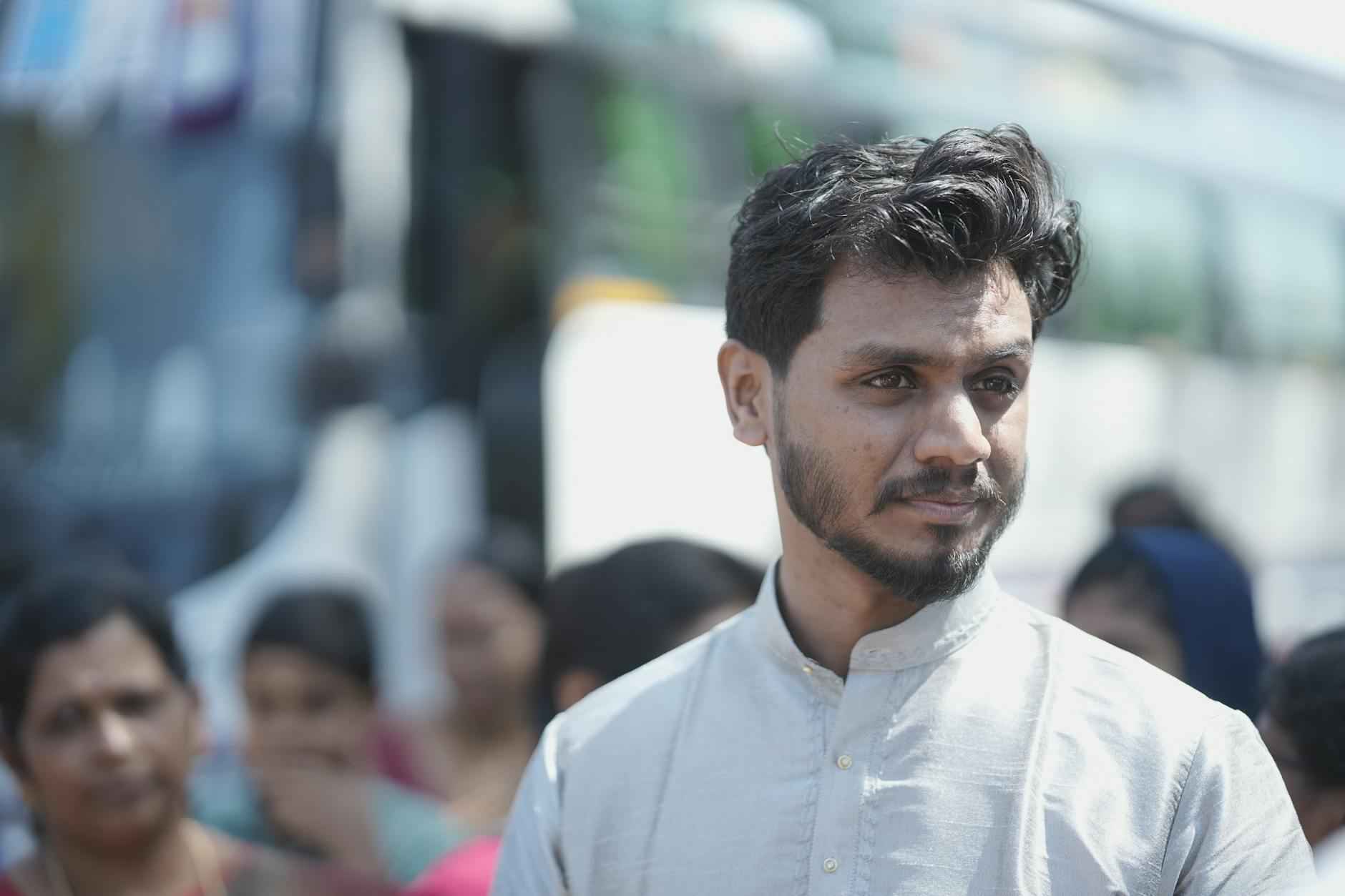
Conclusion: The Future of Indian-American Culture in New York
The Indian-American community has been a vital part of New York’s cultural landscape, contributing significantly to the city’s diversity and vibrancy. As this community continues to grow, its influence is expected to expand even further, enriching the cultural fabric of New York for generations to come. This article delves into the various aspects of this influence, highlighting the contributions of Indian-Americans in areas such as cuisine, arts, and community development.
As the Indian-American community flourishes, its role in shaping New York’s cultural identity is becoming increasingly prominent. With a rich tapestry of traditions, languages, and customs, Indian-Americans are not just preserving their heritage but also integrating it into the broader New York culture. This dynamic exchange is expected to lead to a future where Indian culture is more visible and appreciated across various sectors.
Indian cuisine has already made significant inroads into New York’s gastronomic landscape, but the future promises even more innovation. As Indian chefs experiment with traditional recipes and local ingredients, we can expect a new wave of culinary creativity. Restaurants that fuse Indian flavors with other cuisines are likely to attract diverse clientele, further popularizing Indian dishes. Food festivals celebrating Indian cuisine will also continue to grow, providing a platform for chefs to showcase their culinary skills and for the community to share its rich food heritage.
The arts scene in New York is set to be enriched by the burgeoning Indian-American talent pool. From traditional dance forms like Bharatanatyam to contemporary art exhibitions, the community is poised to make a lasting impact. The rise of Indian filmmakers and actors in mainstream cinema is also expected to increase visibility and appreciation for Indian narratives. As Indian culture becomes more integrated into New York’s artistic expressions, we can anticipate a more inclusive cultural dialogue that resonates with a broader audience.
Community organizations are crucial in fostering cultural awareness and providing support to Indian-Americans. These organizations will likely expand their efforts to promote inclusivity and understanding among diverse communities. Initiatives aimed at cultural education, mentorship programs, and networking opportunities will play a significant role in empowering the next generation of Indian-Americans. The community’s commitment to civic engagement is also expected to grow, leading to more grassroots movements that address social issues and advocate for policy changes beneficial to the community.
Education will remain a cornerstone of the Indian-American community’s future in New York. As families place a strong emphasis on academic success, we can expect an increase in scholarship programs and educational initiatives tailored to Indian-American students. Extracurricular activities that focus on cultural education will help youth connect with their heritage while developing essential skills. This focus on education will not only empower individuals but also strengthen the community as a whole.
With the increasing political engagement of Indian-Americans, we can anticipate a rise in representation in both local and national politics. The emergence of prominent Indian-American political figures will likely inspire more community members to participate in the political process. Grassroots movements addressing social justice and equality will continue to gain momentum, showcasing the community’s commitment to civic responsibility and activism. This heightened political presence will ensure that the voices of Indian-Americans are heard and considered in policy-making processes.
In conclusion, the future of Indian-American culture in New York is bright and full of potential. As the community continues to grow and evolve, its contributions to the city’s cultural landscape will only deepen, enriching New York’s diversity for generations to come.

